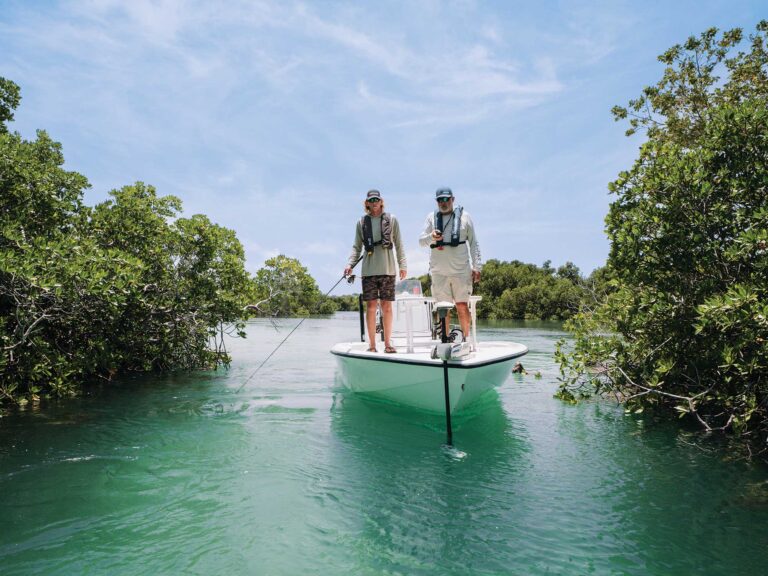Developed by Swedish designer Ocke Mannerfelt, the V-24 is an extremely forgiving boat. It’s nicknamed the “Bat Boat” for its slender nose and aft wings, but the design is no novelty. Conventional V-bottoms can get upended by side rollers and require steering corrections to settle chine-walking tendencies, but the V-24’s wings smooth the ride before you have a chance to correct it with the steering wheel. If the boat gets hit hard on its side, simply back off the throttle for a second, let it right itself, and stomp on the gas again. In turns, the twin-stepped bottom may feel as if it’s going to lean to the outside, which can be a sign of trouble, but a quick blip of the throttle rights it again.
When it comes to running in rough water, the V-24 is designed to do something you’d never consider doing in a conventional deep-V boat – ram right into the waves and pop out the other side without considerable speed loss. The sensation is hard to get used to for experienced boaters. The twin-stepped hull rides level in rough seas. When you hit a wave, you still have to throttle in the waves to keep up the momentum, but unlike other V-bottoms, the V-24 doesn’t threaten to launch the nose skyward as it comes off a wave.
Mannerfelt, who has a licensing agreement with Armada, designed the V-24 with a cylindrical look, working on the theory that a cylinder is a stronger shape than one with sharp corners. The V-24’s bow sports a sharp point, like an arrow, and at its widest point, the running surface measures 4’9″ chine to chine. The wingspan is 8’6″.
Armada’s construction process results in a boat that’s as close to unitized as you’ll find. The solid-fiberglass hull and Divinycell foam-cored deck are two separate pieces, just like a typical boat. While the two pieces are still in the mold, they are butted up against each other and fiberglassed together from the inside. Then after both pieces are removed from the mold, the hull and deck joint are glassed over from the outside, creating the look and strength of a one-piece unit. The downside? There is no rubrail and if you hit the dock, damage will most likely be incurred.
Another safety element is the V-24’s vaporless fuel bladder that comprises a rigid outer shell with a flexible double-walled bladder made of a pliable composite material that the manufacturer says is impervious to fuel. Hydraulic fluid fills the space between the inner bladder, which resembles a deflated bag when empty, and the rigid outer shell. During fueling, the bladder expands only enough to hold the amount of fuel received. Because there’s no place for vapors to build, as there would be in a large rigid aluminum or plastic tank, the risk of explosion from a spark is greatly reduced. However, it takes a very long time to fill, so factor in about an hour for fueling.
To keep all the V-24s as close as possible in performance, Armada builds them within 15 to 30 pounds of one another and the drive heights are within 1/64″ to 1/32″. All the Scorpion 377 engines are sealed by Mercury Racing at the factory and all the boats run 15 1/4″ by 28″ four-bladed Mercury Bravo One stainless-steel propellers that are handed out randomly before each race. After a race, to maintain parity, all the leased boats are returned to Armada.
How do these boats fare in the real world? At the Baltimore race, the top three finishers all finished within a minute of each other over the six-lap race. Not bad for a rental.









